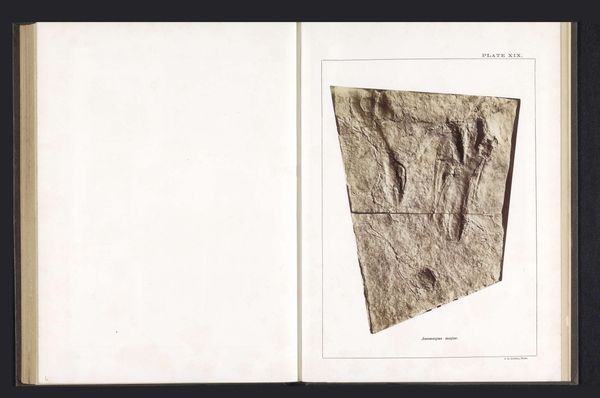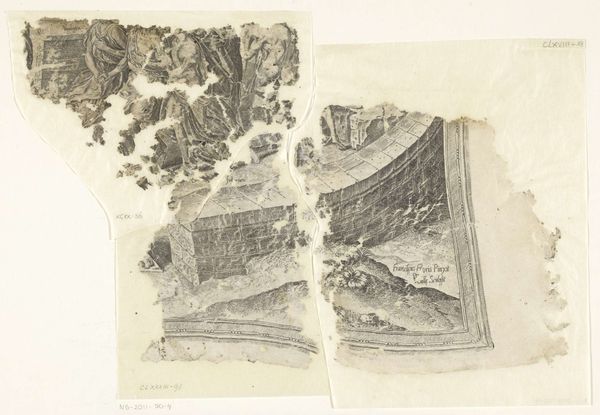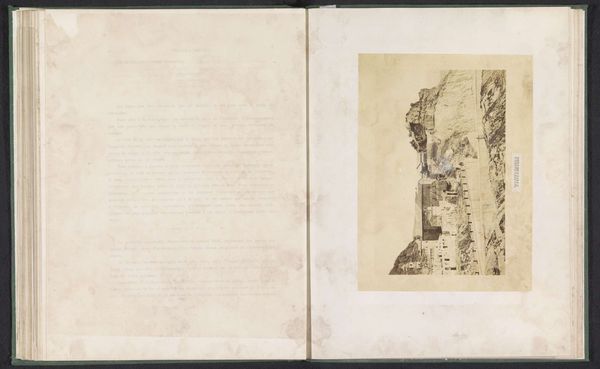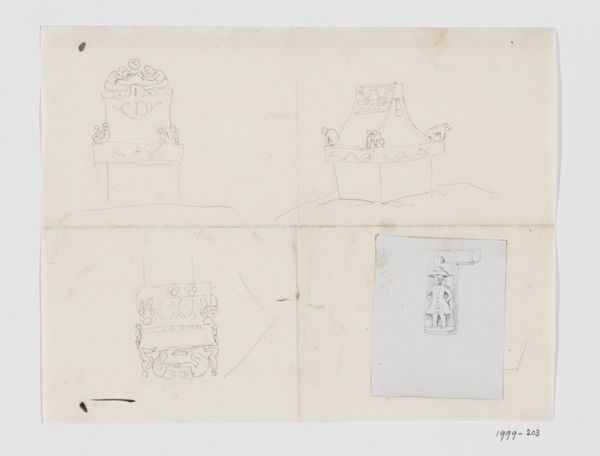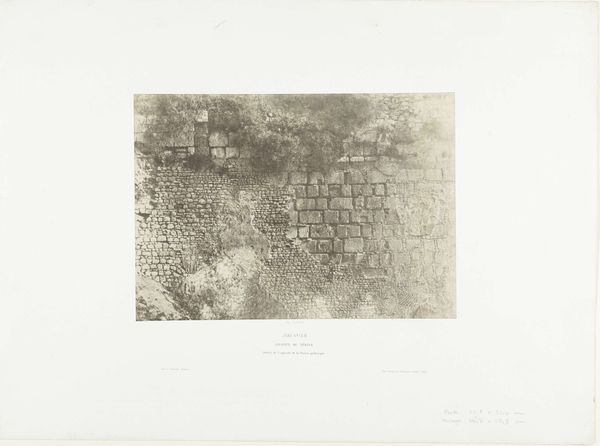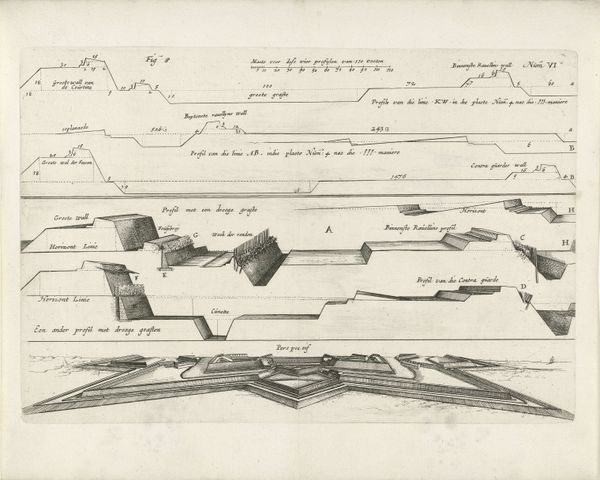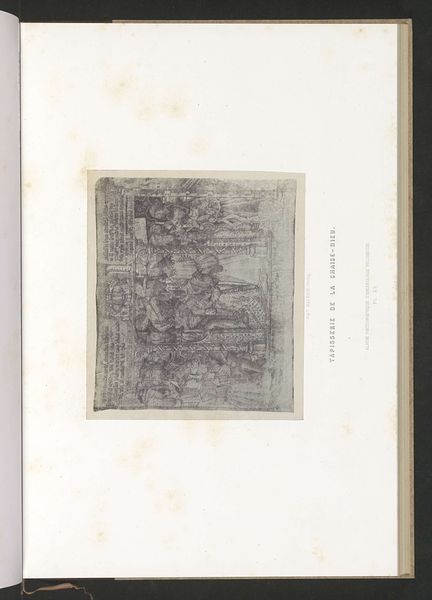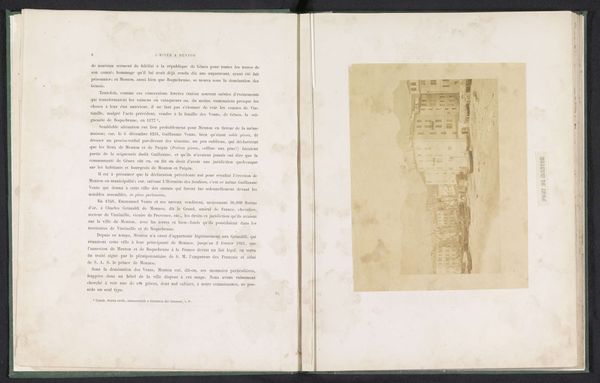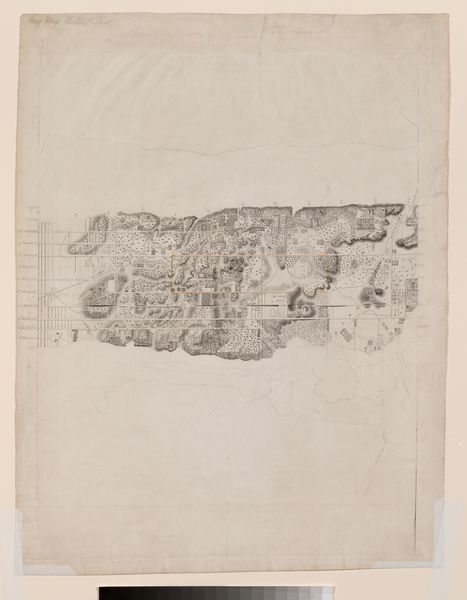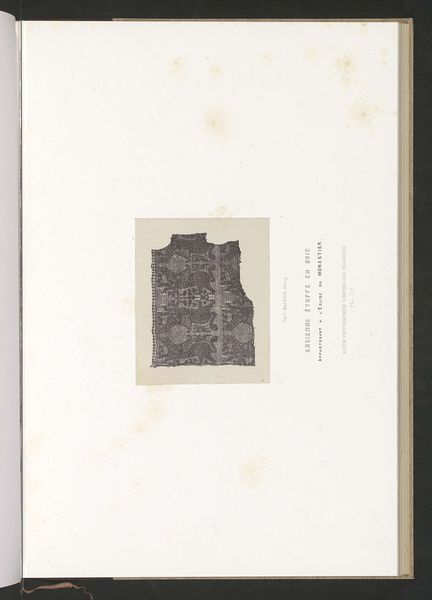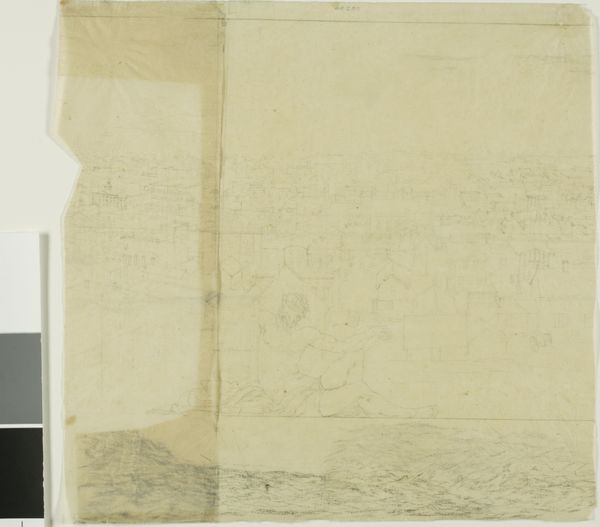
Illustration til "Drawings of some Ruins and Colossal Statues at Thebes in Egypt with an Account of the Fame in a Letter to the Royal Society", London 1741 1741
0:00
0:00
drawing, print, etching, engraving
#
drawing
# print
#
etching
#
landscape
#
classical-realism
#
ancient-egyptian-art
#
etching
#
figuration
#
ancient-mediterranean
#
line
#
history-painting
#
engraving
Dimensions: 256 mm (height) x 420 mm (width) (plademaal)
Editor: This is "Illustration til Drawings of some Ruins and Colossal Statues at Thebes in Egypt", created in 1741 by Marcus Tuscher. It's a drawing and print, an etching really. It feels like a very precise, almost clinical recording of these ruins. What do you make of this, as a piece of historical record and artistic representation? Curator: It's a fascinating glimpse into the 18th-century European fascination with Egypt, and how that interest shaped its artistic representation. It’s titled as an Illustration, meaning it was produced as a record to be printed and circulated. The artist isn't simply showing us the ruins; they are framing Egypt through the lens of Classical Realism. Notice the inclusion of Latin text. What does that suggest to you? Editor: That it’s intended for a scholarly audience, perhaps those interested in antiquity generally? The Romans being in Egypt, and this sort of… almost archaeological pursuit linking it all. Curator: Exactly. And that raises interesting questions about the ownership of history. This image is not just a drawing of ruins; it’s a piece of European intellectual property claiming to present 'the authentic' Egypt. Consider how the print flattens and disseminates a monumental culture for consumption and further study. Editor: So it's not just about the physical ruins, but also about the intellectual and cultural "ruins," of a civilisation. I see a kind of imperial gaze operating here, not of military might, but intellectual possession. Curator: Precisely. Think about the power dynamic inherent in creating and distributing these images. Who gets to interpret history, and for whom? It highlights the complicated role of museums and galleries as cultural gatekeepers. Editor: That's given me a lot to think about; about whose voices are heard, and whose are missing in these historical documents. I'm also looking into who Mr. Tuscher was commissioned by. Curator: Excellent question to consider as we explore this history even further. It goes to the politics of the production, doesn’t it?
Comments
No comments
Be the first to comment and join the conversation on the ultimate creative platform.
